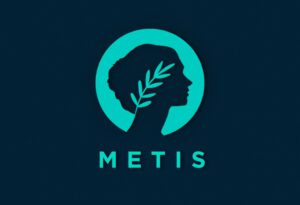
Table of Contents
ToggleFirst it was Bitcoin and then came Ethereum. We started with networks that allow for peer-to-peer transactions in a decentralized manner eliminating intermediaries and continued with blockchains that contain multi-purpose decentralized applications.
If there is one thing we know, it is that this ecosystem has never rested on its laurels and these first-generation networks are currently slow and not very scalable. The focus today is on L2 or second-layer solutions.
Celer Network is focused on creating solutions to these problems and taking blockchain technology to the next level. To this end, they created an L2 solution, a bridge to connect blockchains and tools to facilitate development. In this article I will discuss this complex set of tools, with a lot of development behind it.
Before we begin, what is an L2 solution?
A few months ago, Elon Musk tweeted that the solution needed for Doge to be the dominant blockchain was to create super blocks that contain a large number of transactions and thus scale the blockchain. In a short article, Vitalik (founder of Ethereum) explained that creating “super blocks” would involve hardware to process them that is both too powerful and too expensive, reducing access and undermining decentralization.
So how do we scale a blockchain without losing decentralization and security?
Simple, with an L2 solution, short for Layer 2, or second layer solution. This translates into a chain, external to the main chains, in which transaction data is processed, relieving the main chain of the major computational burden. Although this layer 2 still depends on the security of the main chain.
How, you may ask, “Simple”. The L2 sends only the necessary transaction data, such as status, balances and participants, to the main chain, where they will be stored, making use of its security.
Next, we will look at some of the most explored L2 methods.
State channels
In English, they are simply called channels, the best example being Bitcoin’s Lightning Network. Through these channels, two or more users agree to perform transactions or execute Smart Contracts outside the main chain, returning to it only in case it is necessary to modify states in the blockchain. For example, Marta and Jorge create a channel to make payments to each other for a specific job. Marta sends 1 BTC to the channel and pays for that transaction in BTC. When Jorge starts his job he sends her 0.5 BTC for a negligible cost. Once Jorge finishes the job, he receives the other half of BTC. Once the relationship is over, Jorge withdraws his BTC to his wallet, needing Marta’s signature, as all participants must attest to the validity of this transaction, which will be recorded on the Bitcoin main chain. The limitations of this technology are the need to block tokens before starting to use the channel and the complexity to include several actors.
Sidechains
They are chains that run around the main chain, processing transactions more efficiently and have the ability to send and receive tokens from the main chain. There are two types of sidechains:
1- The “custodials” that have their own consensus and, therefore, their own security.
2- The “non-custodials” rely on the security of the main network.
Rollups
This is the technology that will allow, among other things, to make Ethereum scalable. Rollup means, in English, to roll up and we can literally imagine how transactions are rolled up to gain space and speed. Transactions are executed outside the main network, in a chain created for this purpose with this technology. Capable of processing thousands of transactions per second, this technology makes it possible to compress the information to its minimum possible expression, managing to send to the main chain the necessary information of thousands of transactions, carried out in the L2s, which are recorded in the main chain as a single transaction. This is how it is possible to scale to thousands of transactions per second at extremely low costs.

What is Celer Network?
Of course, this long introduction about L2 solutions has a meaning related to this article, which goes beyond my great fondness for these technologies. The relationship lies in the fact that, to achieve their goals, the team behind Celer Network used and combined these three different ways of approaching a layer two solution.
Celer Network is a scalable, permissioned platform on which anyone can build or use decentralized applications that are, in turn, easily scalable.
By combining three different approaches on L2 solutions, channels, sidechains and rollups, it works as a second layer of blockchains such as Ethereum, currently, or Polkadot, in the future.
So, we are now ready to understand how Celer uses these different ways of constructing an L2.
Celer channels
Celer’s channels are composed of three components, which are identified as follows:
- CelerApps
- CelerPay
- Celer Nodes
CelerApps
In simple words, through their API they collect and replicate the characteristics of the Smart Contract they wish to run in this environment. While they were built to connect to Ethereum, the ultimate idea is that they are “blockchain-agnostic” and can connect to any of them.
CelerPay
Literally the “off-chain” channel on which each transaction is executed, which also replicates the conditions, taken from the CelerApps, necessary for those executions to be identical to how they would be on the main chain.
Celer Nodes
The third link in Celer’s channel system. Like any traditional node, they are responsible for sending and receiving transactions. It is by means of these sends that the communication and scalability of the different specific channels that operate on the platform is achieved.
As I mentioned in the brief introduction to channels, the information needs to be validated by each of the participants in the channel, so what should we do if a participant is offline? Should we wait for him to connect? Of course not, and this is where the L2 method comes into play.
Celer Sidechain or State Guardian Network
In order to solve the problem of users “disconnected” from the different channels, Celer considered that it was necessary to have a service that fulfills the following functions:
- Contain an updated backup of the off-chain transactions performed in the channels.
- On the basis of this information, take part in disputes that may arise in the various channels and respond for “disconnected” users.
- Receive payments on behalf of these users.
- Provide updated information on transactions in the channels, if required.
You might be thinking that you could simply set up a database on a server and with a couple of simple calls to get that information, everything would be solved. But come on, we are in the crypto ecosystem and that’s not how we solve things.
The Celer team created a sidechain called State Guardian Network that replaces the disconnected users. This is how they achieved a scalable solution, with 100% availability, secure and decentralized.
Rollups
Clearly this technology could not be left out. Thanks to rollups, tokens from the main chain can travel, at a lower cost than traditional ones, to the channels and vice versa.
To achieve these transactions at low cost the method is as follows.From the main chain, let’s assume Ethereum, tokens are accumulated in a Smart Contract, which waits for the arrival of a reasonable number of tokens sent by different users, to then be sent via a single transaction to the L2.
In this way, the total cost of this transaction is divided among all those who have requested to send funds to Celer’s L2. It is worth noting that the same path, but in reverse, is followed when returning these tokens to the main chain.
To sum up…
So, as a user, you may be wondering what can I do thanks to Celer Network? Well, here’s what:
Send your funds from Ethereum to Celer’s L2 by splitting the fee among all those who share the single transaction.
Operate within channels, “off-chain”, with negligible costs and great speed, without worrying about disconnected users.
If desired, return these tokens to the main chain, again sharing the transaction fee with those who wish to do so at the same time.
I definitely call this “scaling a blockchain.”

Beyond Celer Network
As I wrote in the introduction to this article, Celer’s product range extends beyond its layer 1 network scalability solutions. Let’s take a look at what these options are all about.
Celer Bridge
Perhaps its most widespread product to date. Bridges are responsible for making the chains communicate with each other. Without them it would not be possible to carry tokens from one chain to another in a decentralized manner.
Version 1.0 was a success, but the Celer team plans to launch version 2.0 soon, which will bring, among others, the following new features:
- Increased liquidity
- Improved usability
- Connections between new networks
- Send “wrapped tokens” of native currencies to your own network, example -> send WETH from BSC and receive ETH in Arbitrum
- 24-hour service (via State Guardian Network sidechain)
- Any user will be able to provide liquidity and benefit from the sending fees
- Possibility to provide on a single network
- Liquidity incentives
As of today, the bridge connects and allows sending tokens between compatible EVM networks such as, Ethereum, Binance Smart Chain, Polygon, Arbitrum, xDai, Fantom, Avalanche, Optimism, OkexChain and Heco. Probably, the connection of these networks with Polkadot is the most anticipated innovation.
Being a bridge, already in its first version, economical and fast, the improvements of its new version will position it as a leader in the segment.
Celer SDK
I mentioned throughout the article that Celer promotes constant collaboration and the open source spirit permeates each of their decisions. This is why they provide SDKs or software development tools for each and every one of their products.
Developers will be able to find in their GitHub, both tools to build applications to use in Celer channels and to build new bridges between different blockchains.
A glimpse into the future
When thinking about the future of the blockchain ecosystem, the issues that resonate most clearly are scalability, costs, speed and interoperability. Undoubtedly, no one is willing to achieve those goals while leaving aside decentralization and network security.
However, when thinking about solutions to these problems, we usually focus on how a network will solve its own problems. This happens with ETH 2.0 or when we comment on how Polkadot, indoors, will solve Ethereum’s shortcomings.
Here we come across a project equipped with a combination of the latest technological trends in the crypto world, which aims to provide scalability and interoperability to operating networks, without sacrificing a modicum of security and decentralization.
A successful future for Celer rests on the need for its dissemination. The rest, it already has.








